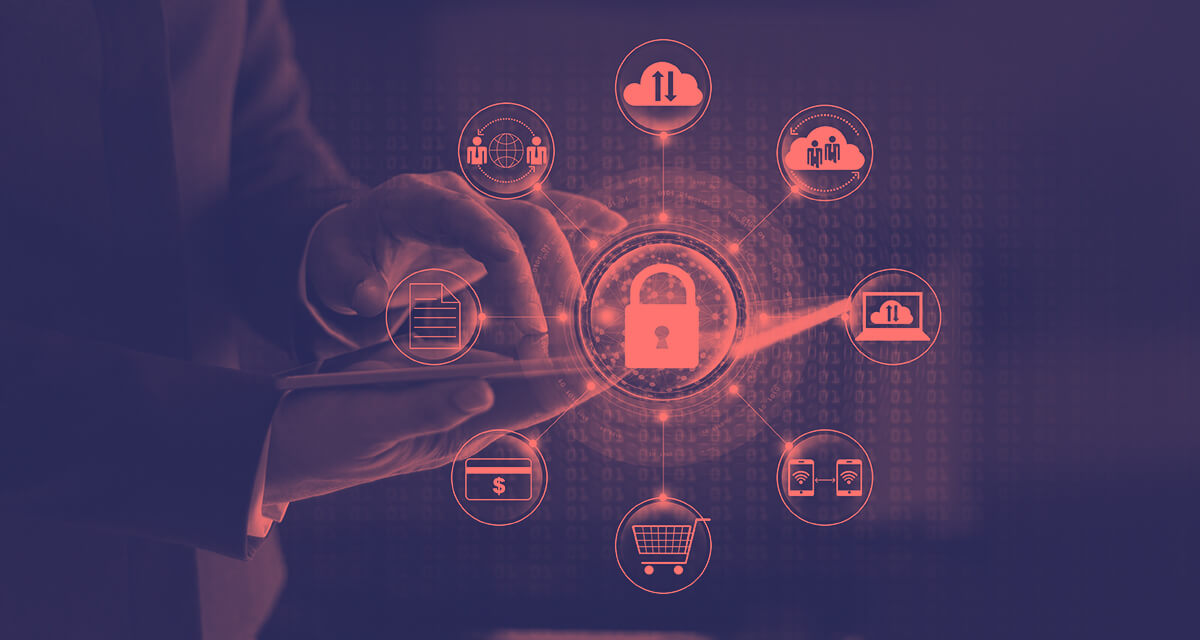

Identity and access management, or IAM, is a combination of procedures, tools, and guidelines that define and manage the access privileges and roles of specific network entities (devices and users) to various on-premises and cloud services. IAM systems aim for one digital identity per person or device. After the creation of a digital identity, it must be updated, maintained, and tracked throughout the access lifecycle of every device and user.
The IAM users may include:
The IAM devices may include:
IAM allows user provisioning with distinct roles and establishes proper user access privileges to organizational assets and networks. It facilitates business processes, enhances user satisfaction and security, and boosts the effectiveness of remote and mobile working and cloud deployment.
Information technology (IT) administrators can restrict user access to sensitive data within the organization using an IAM architecture. IAM systems include:
Additionally, these technologies offer the capability of safely storing identity, user profile data, and data governance features that assure appropriate and required data sharing. Organizations may set up IAM systems on-site, offered by a third-party supplier under a subscription-based cloud model, or established in a hybrid approach.
There is an excessive organizational, and governmental obligation on business executives and IT teams to secure access to business assets. It limits using error-prone and manual procedures for allocating and monitoring the user’s identity and password. These processes are automated by IAM, which also makes it possible to audit and regulate granular access to all company assets both in the cloud and on-premises.
IAM has numerous characteristics that enhance over time, including AI, behavior analytics, and biometrics. This makes it well adapted to the challenges of the modern security environment. For instance, IAM’s stringent resource access control in extremely dynamic and distributed settings complies with the IoT’s security protocols and supports the industry’s shift from firewalls to zero-trust models. IAM technology is not exclusive to larger firms with higher budgets but feasible for businesses of all sizes.
IAM analyst Andras Cser states the importance of identity as Covid has immaterialized physical boundaries. Businesses are increasingly opening their internal systems to outsiders and relying on remote employees. He claims identity has emerged as the key component of client retention and management as digital transformation accelerates. Gartner’s 2021 Planning Guide for IAM study suggests COVID-brought disruption has exposed flaws in the IAM architecture of businesses and significantly enhanced IAM evolution. Hence, IAM is essential to the economy.
Identity and access management allows controlling user access, monitoring and managing access levels, and user privileges for security boost. Fundamental obligations of IAM include:
User And Device Identification
IAM controls digital identities for users, applications, and devices. It allows easy determination of genuine users and applications they are authorized to access.
Automatic De-Provisioning
The IAM solution helps mitigate related security risks when an employee quits a job. Manual de-provisioning of ex-employees access privileges to the services and applications is time-consuming and is seldom overlooked. Hackers can exploit this security gap. IAM automates de-provisioning access rights to eliminate the security gap whenever an employee’s position changes or an employee quits the job.
Role-Based Access Control
IAM solutions enable role-based access control and limit user access to sensitive data. System administrators can control user access to corporate networks according to the roles of individual users.
IAM integrates with API, data store, application, device, etc. However, organizations must have a robust and complex IAM solution to meet compliance standards. Systems can deploy any combination of the following IAM components:
It is the method of managing a company’s data integrity, security, usefulness, and availability. An IAM solution necessitates data governance, as businesses must have high-quality data to use machine learning and artificial intelligence tools. Data governance includes the implementation of data regulations and standards surrounding data use, ensuring data reliability, consistency, and security.
It shields organizations from outsider and insider threats. PAM assigns high permission levels and administrator-level controls to accounts with crucial corporate resource access. Cybercriminals majorly target such accounts, which puts enterprises at great risk.
With the need to input numerous credentials and submit different factors, multi-factor authentication confirms a user’s identity:
This access control enables user authentication with numerous systems and software apps employing only one login and a single set of credentials. The website or program that the user tries to access depends on a reliable third party to confirm that the user is the same individual they claim, leading to:
Organizations share digital IDs with reliable partners through an authentication-sharing method called federated identity management. It helps users access numerous partners’ services while logging in with the same credentials or account-for instance, single sign-on.
A risk-based authentication system determines the risk level when a user logs in to an application by examining contextual variables like their current location, IP address, network, or device. This guides its decision whether to refuse access, grant access, or request them to provide an extra authentication factor. The system aids companies in quickly identifying possible security threats, boosting security by using more authentication factors, and acquiring a better understanding of user context.
Businesses are moving away from the conventional notion of trusting everything or everyone behind a firewall or connected to a network establishing a zero-trust strategy. This view is not valid anymore as the proliferation of the cloud and mobile devices resulted in workplace extension beyond the confines of the office and allowed individuals to work from any location. IAM is essential to this strategy, enabling organizations to evaluate and confirm their resource accesses continuously.
Multiple advantages of implementing an IAM (identity and access management) system include:
By automating help desk inquiries and password resets, an IAM system eliminates these submission requirements for users. It allows customers to confirm their identification swiftly and simply without disturbing system administrators. Consequently, enabling the administrators to concentrate on duties that positively impact business growth.
In a world of highly strict privacy and data regulations, an efficient IAM system aids a firm in meeting its compliance requirements.
Sharing networks with multiple staff members, suppliers, partners, and clients boosts productivity and efficiency but intensifies security risks. IAM solution implementation helps businesses diversify access control to the networks, systems, and applications in the cloud and on-premises without compromising security.
Less risk of internal and external data breaches results from improved user access control. It is crucial because user credentials are a popular target for hackers to access business resources and networks.
Develop IAM Integration Strategy
Complete implementation of IAM, promoting teamwork across the business, and investing the time and effort into establishing a cogent identity management strategy can eliminate several risks, including:
Business Size And Type
IAM is suitable for businesses of all sizes. Identity access and management solutions are essential for businesses to automate the management of user access privileges and identities on numerous devices in various computing environments and locations. IAM solutions for SMEs and big enterprises include:
It is envisioned that an IAM system will link with many other systems. Thus, the technologies or standards that all IAM systems must support include:
An identity provider system, like an IAM, and an application or service can interchange authentication and authorization information using the open standard known as SAML. Using this technique, an IAM can enable a user to log into an IAM platform-integrated application.
A recent open standard called OIDC allows users to access the application via an identity provider. It closely resembles SAML as it transmits data using JSON rather than XML. However, OIDC is based on the OAuth 2.0 standards.
The industry-standard IAM protocol is OAuth 2.0. It is a delegation technique for API access. OAuth 2.0 is an open authorization technology that enables an application to access other website applications’ resources on a user’s behalf without disclosing the user’s login information. It enables third parties to log in using vast social networks like Google, Twitter, and Facebook.
It enables the automatic exchange of identity information among two systems. SCIM maintains up-to-date user data every time user data is updated, a new user is transferred to the application or service, or a user is deleted. In the IAM environment, SCIM is a crucial part of user provisioning.
The open standard JSON web tokens outline a condensed and independent method for reliable data transfer between entities as a JSON object. JWTs are trustworthy and verifiable since they are signed digitally. They allow authenticated users’ identity transfer between the service seeking the authentication and the identity provider. They can be encrypted and authenticated as well.
IAM solutions offer administrators the technology and tools to modify a user’s position, monitor user activity, compiling user activity reports, and consistently enforce policies. IAM systems help manage user access throughout an organization and establish corporate and legal rules compliance. Common IAM tools are:
Laws, contracts, and rules all pertain to security. Strict data security standards are enforced by the U.S., like Sarbanes-Oxley and HIPAA Act, and in Europe, like GDPR (General Data Protection Regulation). The highest standards of administrative transparency, tracking, and security can be made a norm in daily operations with the help of an IAM solution for organizations and users.
An IAM system integrated into Amazon Web Services (AWS) is known as AWS identity and access management. AWS IAM enables making new AWS groups and users and allowing or rejecting their access to AWS resources and services. The free-of-cost AWS IAM service offers:
Access management employs your data identity to control which software suites you have access to and what you can do once you get access. For instance, access management will provide timesheet review access to each manager who supervises direct subordinates, but not enough access to allow them to approve their timesheets.
Identity management saves user data ( job title, direct report, etc.) and verifies the user identity—an identity management database stores this information.
The increasing use of mobile devices and normalization of remote work has resulted in significant growth of identity and access management. A frenzy of demands for remote access to sensitive data, the impending prospect of cyberattacks when users visit malicious websites, and a flood of new device connections are all brought on by insecure networks paired with unique consumer expectations.
The context of a user is continuously assessed during each contact using continuous authentication. The possible risk level is determined using AI to examine micro-interactions while considering location, user mobility, and time. Endpoint detection and response (EDR), host-based firewalls, and future antivirus software will develop further and increase organization security.
